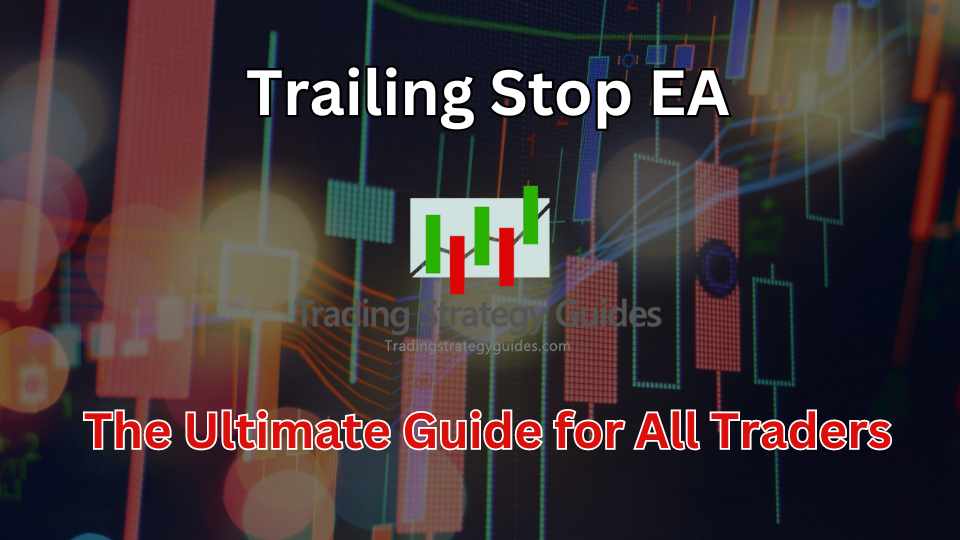The Ultimate Trailing Stop EA Guide for All Traders

Mark Thomas — Trade On Track
Trailing stop EA is an essential tool for traders seeking to optimize their strategies. This guide delves into the practical application of a fractal-based trailing stop loss strategy, offering a comprehensive approach to managing risks.

Thanks for visiting Trading Strategy Guides (TSG)!
You have discovered the most extensive library of trading content on the internet. Our aim is to provide the best educational content to traders of all stages.
Learn Our Trading Best Strategy By our Founder Casey Stubbs
In other words, we want to make YOU a consistent and profitable trader.
If you’re a brand new trader, we recommend hopping over to our ultimate beginner’s guide to trading to learn more.
By integrating fractals into the trailing stop mechanism, traders gain a dynamic method to protect their gains. This ultimate trailing stop EA guide not only simplifies the concept for beginners but also provides valuable insights for seasoned traders looking to refine their approach.
Here, you’ll find a blend of theory and real-world application, making it a vital resource in your trading toolkit.
Table of Contents
Introduction to Fractal-based Trailing Stop EA
Before I lose you, let me quickly explain what a “fractal-based trailing stop EA” is – it’s more useful and interesting than it might first appear! This is a part of several articles that are designed and developed by an Expert Advisor (an automated trading system) that positions and moves our stop loss for us based on fractals.
Moreover, this EA is not going to be a fully automated trading system. It’s just going to automate our stop loss for us. This tool can be helpful for just about any trend-following trading strategy you might already use. The idea of using it is to enter your trade as you normally would, then kick off this EA position and move the stop loss for you from that point on.
If you find yourself watching your screen for hours on end just to move your stop loss up or down as the price continues to move in a profitable direction, then this could save you some time.
Most trailing stop systems just keep moving your stop a set number of pips from the current price. This is not very logical and not very effective. Also, this little robot can position stops in the same way that you would place them yourself, just below the pivots (fractals) in an uptrend or just above the pivots in a downtrend.
While I’m using the term “EA,” which is the term that the Metatrader platform uses for its automation scripts, this particular article will not be MetaTrader-specific.
This article will discuss the overall design of the fractal-based stop-loss system, which can be applied in your manual trading or to any trading platform with automation capabilities.
Understanding the Concept of Fractals in Trading
A fractal (sometimes called a pivot level, pivot point, or reversal point) is normally described as a formation of at least five bars (or candles), where a high is surrounded by two lower highs on each side (a bearish fractal), or a low surrounded by two higher lows on each side (a bullish fractal).
The chart below shows the bearish fractals highlighted with red circles and the bullish fractals highlighted with green circles. The bearish fractals generally indicate turning points where the price heads down, and the bullish fractals generally indicate turning points where the price heads up.

The above image shows how the GBP/CHF behaved over a day or so on the 15-minute chart. There was a nice downtrend for about 150 pips before it started turning back up again.
We’ll use this example in the design of our fractal-based trailing stop system. Let’s break the chart down into segments and follow a potential trade-off for that downward trend. You can also read about our stop-loss strategy for better trading.

Placing the Stop-loss
The breaking of a fractal level is often used in conjunction with other triggers as an entry signal. We’re not really going to discuss entries in detail here, but let’s consider that we entered a short trade as soon as the price broke through the first bullish fractal indicated by the green horizontal line on this chart.
So, our entry would be on the green cross. For our stop-loss system, we’ll place our stop loss just above the last bearish fractal before the price break. A red horizontal line on the above chart indicates this.
Note: On our big chart above, you’ll see that the entry candle actually turned out to be high of a bearish fractal. However, at the time of entry, we didn’t know there were going to be two lower highs to follow it, so we had to go back to the last confirmed fractal at that time.
We’re now in our trade and attempting to follow the trend down. When would be a good time to move our stop loss down? A logical answer would be when the price breaks through another bullish fractal.
So, we’ll need to wait for another low to form into a fractal, which will require the price to go down, retrace back up a little, and then continue on down and through that new fractal low.

In the above chart, when the price hits the green cross (when it breaks through the previous bullish fractal), we’ll move our stop loss to just above the last bearish fractal that occurred before our price break. This trailing stop loss strategy continues as we follow the price down.
There’s one other rule that we’ll build into our trailing stop strategy. Notice how each of the bearish fractals in the above image moves downwards – each one is lower than the previous one. Often, near the end of a trend, this pattern doesn’t continue. Instead, we get a bearish fractal higher than the previous one.
If this happens and the price fails to break below the last bullish fractal, then we’ll move our stop to just above the last bearish fractal. Here’s an example:

So, we would have been stopped out at that last red horizontal line, pointed to by note (4).
You can see the power in using fractals to position the stop loss because the stop is placed just above a resistance level (the bearish fractal) in a downtrend and just below a support level (the bullish fractal) in an uptrend.
Sometimes, the price breaks through the fractal point by a few pips, so allowing a few pips between the fractal point and the stop loss is a good idea. This could vary depending on the chart period. For instance, if we’re trading a 15-minute chart, then we might allow six or seven pips between the fractal point and the stop loss.
If we’re trading a 4-hour chart, this buffer might be increased to 16 or 17 pips. It also depends on the relative volatility of the currency pair. For example, the GBP/JPY can make a false breakthrough at a fractal point by more pips than, say, the AUD/USD.
In the design of our automated trailing stop script, it would be a good idea to have this buffer as a “variable” so that you can change it yourself whenever you activate the script.
Conclusion
In wrapping up this ultimate trailing stop EA guide, we’ve explored how a well-executed trailing stop loss strategy can significantly enhance your trading performance.
By utilizing a fractal-based approach, the trailing stop EA becomes a powerful tool, dynamically adapting to market changes and securing profits while minimizing risks.
Whether you’re a novice or an experienced trader, the insights and methodologies discussed here provide a solid foundation for developing robust trading strategies.
With this knowledge, you’re now equipped to navigate the markets, making informed decisions that align with your trading objectives.
In the next article, we’ll convert this design into some specific rules that can be implemented in computer code.







good information and video. http://www.forextrailer.com provide trailing stop EA, if you like can download for free